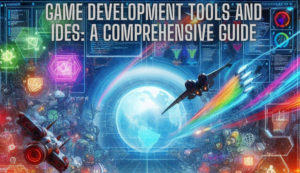Will AI Design Your Next Product??

Introduction
In an era where technology is advancing at an unprecedented pace, artificial intelligence (AI) is revolutionizing various industries, including product design. AI is no longer just a futuristic concept; it has become a powerful tool that can significantly enhance the product design process. In this blog, we will explore how AI can transform product design and lead to more innovative, efficient, and user-centric solutions.
1. AI-Driven Data Analysis for User Insights
One of the key pillars of successful product design is understanding the needs and preferences of the target audience. AI can analyze vast amounts of data, including user behavior, feedback, and social media interactions, to gain valuable insights into user preferences. By processing this data, designers can make informed decisions that align products with users’ desires, resulting in more satisfying and successful designs.
2. Generative Design: Unleashing Creativity
Generative design is an AI-driven technique that produces multiple design options based on defined parameters and constraints. It allows designers to explore a multitude of creative possibilities that would be impossible to generate manually. AI evaluates and refines these designs, making it easier for designers to select the most promising concepts and refine them further, ultimately leading to more innovative and unique product designs.
3. AI-Enabled Rapid Prototyping
Prototyping is an essential part of the design process, allowing designers to visualize and test their concepts. AI can accelerate the prototyping phase by automating the creation of physical prototypes or digital models. 3D printing and AI algorithms can work together to optimize the design for various factors such as strength, weight, and aesthetics, resulting in faster and more efficient iterations.
4. Personalization and Customization
AI enables designers to create personalized and customizable products that cater to individual preferences. By analyzing user data, AI can suggest tailored features or designs based on each user’s unique requirements. This level of personalization enhances user satisfaction and fosters a stronger connection between users and the products they own.
5. Aiding Material Selection and Sustainability
AI can assist in selecting the most suitable materials for product design by considering factors like durability, environmental impact, and cost-effectiveness. By recommending sustainable and eco-friendly materials, AI contributes to the growing trend of environmentally conscious product design.
6. Natural Language Processing (NLP) for Enhanced User Interfaces
Incorporating NLP into product design can lead to more intuitive and user-friendly interfaces. AI-powered voice assistants and chatbots can understand and respond to user commands and queries, making the product interaction more efficient and enjoyable.
7. Predictive Maintenance and IoT Integration
AI’s ability to analyze large datasets and identify patterns allows it to predict potential issues and failures in products, especially in the context of Internet of Things (IoT)-connected devices. This enables proactive maintenance and reduces downtime, leading to improved product reliability and customer satisfaction.
8. Streamlining the Supply Chain and Manufacturing Processes
AI can optimize the supply chain by predicting demand, automating inventory management, and identifying cost-effective suppliers. Additionally, in manufacturing, AI-powered robotics and automation enhance production efficiency, reducing lead times and production costs.
Conclusion
Artificial intelligence has emerged as a game-changer in the world of product design. By harnessing AI’s capabilities, designers can gain deeper insights into user preferences, explore more creative design options, and create personalized products that resonate with customers. AI-driven rapid prototyping, material selection, and predictive maintenance contribute to efficient and sustainable product development. As AI technology continues to advance, its integration into product design processes will become increasingly crucial for staying ahead in the competitive marketplace. Embracing AI in product design promises a future of innovation, user-centricity, and unparalleled efficiency in creating groundbreaking products that meet and exceed customer expectations.
Similar Articles
-

Blockchain Gaming: Where Fun Meets Decentralization 04-12-2024
Introduction The gaming industry has always been a hotbed of innovatio
-

The Art of Product Design: Creating Timeless Toys 03-19-2024
Crafting Memories, One Toy at a Time: This is a journey of innovation
-

ACES: Revolutionizing Color Management in Visual Effects 02-19-2024
ACES, which stands for the Academy Color Encoding System, is a standar
-

Game Development Tools and IDEs: A Comprehensive Guide 02-15-2024
Game development is a complex and multifaceted process that requires a
